- Sobre nossa empresa
- Sobre o nosso relatório
- Estratégias de Sustentabilidade
- Metas e Desempenho
- Índices de relatórios ESG
- Relatório de downloads
Por que a estratégia climática é importante
Governança
B
Pontuação CDP de Greif em 2021
Demonstrando excelência em gestão de carbono, governança, estratégia e melhores práticas, e superando a pontuação média geral e norte-americana do CDP de C.
Nossa pegada de carbono e responsabilidade climática se estendem por todo o ciclo de vida de nossos produtos – da extração de matérias-primas ao uso e fim de vida de nossos produtos. Desde 2010, a Greif mantém uma Equipe Global de Clima[1], composta por representantes de todas as unidades de negócios e regiões, responsáveis por fornecer suporte, orientação e direção às instalações para identificar projetos de redução de energia e emissões. A equipe também é responsável por ajudar as instalações a desenvolver roteiros e monitorar o progresso em direção à nossa meta de 2030. Em 2019, reestruturamos a equipe para dar maior ênfase à inclusão de liderança regional para melhor envolver e identificar oportunidades dentro de cada unidade de negócios e instalações legadas da Caraustar. Essa mudança na estrutura simplificou nosso processo de roteiro de energia, permitindo que nos concentremos e invistamos nas unidades de negócios e instalações que têm as oportunidades mais impactantes.
Este ano, nosso Conselho de Liderança focou em sustentabilidade, com um subgrupo do conselho dedicado exclusivamente ao clima. O conselho e a Equipe do Clima realizaram reuniões trimestrais para determinar itens de ação que precisam ser tomados para impulsionar o progresso em direção à nossa meta de emissões de 2030, aumentar a conscientização sobre nossos objetivos climáticos em toda a organização e criar responsabilidade, reportando-se diretamente ao CEO para atualizar e colaborar em metas e iniciativas ambientais.
Este ano, nosso Conselho de Liderança focou em sustentabilidade, com um subgrupo do conselho dedicado exclusivamente ao clima. O conselho e a Equipe do Clima realizaram reuniões trimestrais para determinar itens de ação que precisam ser tomados para impulsionar o progresso em direção à nossa meta de emissões de 2030, aumentar a conscientização sobre nossos objetivos climáticos em toda a organização e criar responsabilidade, reportando-se diretamente ao CEO para atualizar e colaborar em metas e iniciativas ambientais.
A eficiência energética é uma consideração na implantação de capital. Incluímos ESG nos critérios para solicitações de capital como parte do nosso sistema de alocação de capital e para demonstrar ainda mais a inclusão do impacto ESG em nossos negócios. Nós selecionamos benefícios ESG, como redução do consumo de energia, redução do uso de matéria-prima e aumento da saúde e segurança de pessoas e produtos em nosso processo de tomada de decisão. Enquanto cada instalação era responsável anteriormente por desenvolver seu próprio roteiro, a liderança regional agora é responsável por colaborar com cada unidade de negócios para identificar oportunidades de redução de energia e eficiência.
Em 2021, implementamos 23 projetos de eficiência energética, resultando em mais de $440.000 de economia em toda a nossa organização. Esses projetos incluem a substituição de equipamentos e a atualização de processos que reduzem a demanda de energia, como a substituição de fornos, compressores de ar e caldeiras, o ajuste de temperaturas da água e a implementação de práticas de eficiência energética, como iluminação e substituições de HVAC. Para obter mais informações sobre nossos projetos de eficiência energética, consulte as seções C4.2 e C4.3b de nosso Relatório de 2021. Resposta climática do CDP.
Em 2020, conduzimos uma análise de lacunas de nossas práticas atuais de gestão climática em relação às recomendações da Força-Tarefa sobre Divulgação Financeira Relacionada ao Clima (TCFD) para identificar áreas prioritárias de foco para avançar nossa estratégia climática e modelar metas climáticas potenciais em vários cenários de temperatura. Este trabalho levou à identificação e aprovação de nossa nova meta de emissões para 2030 e revelou a necessidade de conduzir uma análise de cenário mais detalhada para entender melhor nossos riscos e oportunidades climáticos transicionais e físicos. Como resultado do trabalho da TCFD e da estratégia climática, implementamos ações para melhorar a governança por meio de reuniões trimestrais da Equipe de Gestão de Sustentabilidade com o Comitê de Direção de Sustentabilidade, o foco do Conselho de Liderança em sustentabilidade e reuniões trimestrais entre o VP de Sustentabilidade, o Chefe de Marketing e o CEO. Relatamos KPIs no livro mensal Greif Business Systems (GBS), no scorecard mensal Must Win Battle (MWB) e no scorecard empresarial do CEO. Também incluímos os KPIs ESG em nossos slides mensais e trimestrais que os gerentes usam para manter suas equipes responsáveis.
Em 2021, realizamos uma série de workshops internos sobre risco climático para entender melhor os riscos e oportunidades relacionados ao clima que nossos negócios enfrentam. Por meio dos workshops, colegas de departamentos multifuncionais e de toda a nossa presença global colaboraram para identificar, classificar e avaliar riscos e oportunidades regulatórios, de mercado e físicos relacionados ao clima. Por meio desses workshops, identificamos os riscos e oportunidades mais significativos para nossos negócios. Em seguida, conduzimos uma análise de cenário e modelagem financeira para entender melhor os impactos potenciais em nossos negócios. As equipes criaram uma lista de itens de ação para a Greif mitigar e gerenciar riscos, bem como estratégias para capitalizar as oportunidades. Os resultados deste trabalho serão ainda mais integrados à nossa estratégia de negócios e processo de gerenciamento de riscos. Para saber mais sobre nosso processo de gerenciamento de risco empresarial, visite o Gestão de Riscos e Continuidade de Negócios seção do nosso relatório de sustentabilidade.
|
Risco / Oportunidade |
Tópico |
Descrição*
|
|---|---|---|
|
Risco |
Catástrofe natural |
Grande inundação/furacão/terremoto/tempestade de vento, etc., levando à perda de uma instalação de produção importante ou valiosa (uma ou várias). |
|
Risco |
Mecanismos de precificação do carbono |
Regulamentos de precificação de carbono, como sistemas de cap-and-trade e impostos de carbono, estão impactando Greif em alguns mercados (Europa e América do Norte) e podem surgir em outras regiões. Isso se manifesta como uma despesa substancial e crescente. |
|
Risco |
Investimentos ineficientes / planejamento de capital |
A falta de recursos para entender completamente o impacto que as mudanças regulatórias podem ter em decisões estratégicas e investimentos pode levar a uma alocação de capital abaixo do ideal. Isso inclui instalações se tornando obsoletas mais rapidamente do que o esperado, bem como um ROI menor do que o esperado.
|
|
Risco |
Resiliência / continuidade da produção |
Capacidades organizacionais excepcionais, resiliência empresarial associada, preparação e agilidade permitirão que a Greif retome os níveis de produção mais rapidamente e ofereça melhor suporte a colegas, clientes e comunidades ao longo do tempo, caso interrupções e catástrofes se tornem mais comuns.
|
|
Risco |
Catástrofe ambiental direta
|
Grandes eventos climáticos/meteorológicos em instalações importantes, como as operações da Delta, Vreeland e Paper Mill, levando a um grande evento ambiental, evento financeiro e potencialmente levando a problemas de relações públicas/imagem.
|
| Risco e oportunidade | Mudança nas preferências do cliente | A demanda por produtos sustentáveis está aumentando. O risco de que a Greif não esteja se movendo rápido o suficiente para responder ao uso crescente de materiais reciclados em processos de produção pode reduzir a demanda pelos produtos e serviços da Greif. Além disso, regulamentações relacionadas ao clima que limitam os mercados finais dos produtos da Greif, como a indústria de petróleo e gás, podem limitar os negócios da Greif ao diminuir a demanda por seus produtos e serviços em mercados-chave. A Greif pode capitalizar essa oportunidade aumentando nosso portfólio de produtos sustentáveis rapidamente. |
| Oportunidade | Impacto no negócio de reciclagem da Greif | Cenários climáticos de maior ambição dependem do aumento das taxas de reciclagem de aço e plástico. Se posicionada apropriadamente, a Greif pode ser capaz de aumentar a escala de sua prática atual de recondicionamento. |
|
Oportunidade |
Resiliência
|
Capacidades organizacionais excepcionais, resiliência empresarial associada, preparação e agilidade permitirão que a Greif retome os níveis de produção mais rapidamente e ofereça melhor suporte a colegas, clientes e comunidades ao longo do tempo, caso interrupções e catástrofes se tornem mais comuns. |
*Por favor, veja Greif's Resposta às mudanças climáticas do CDP 2021 para informações adicionais
[1] Anteriormente a Equipe Global de Energia
Metas e Progresso
Em 2020, conduzimos uma análise e avaliação detalhada com um terceiro sobre nossa capacidade de nos comprometermos com uma meta que seria aprovada pelo Iniciativa de Metas Baseadas na Ciência (SBTi). Em seguida, anunciamos nosso compromisso de reduzir nossas emissões de Escopo 1 e Escopo 2 em 28% até 2030, a partir de uma linha de base de 2019. Esta nova meta está alinhada com a ciência climática predominante para limitar o aquecimento global geral a bem abaixo de 2 graus Celsius e se baseia na redução de emissões de 11% por unidade de produção da empresa em 2020. Até o final de 2023, a Greif também concluirá uma avaliação de suas emissões de Escopo 3 e determinará a viabilidade de uma aspiração de emissões líquidas zero de longo prazo em alinhamento com a Science Based Targets Initiative.
Em 2021, focamos em melhorar a coleta de dados enquanto continuamos a avançar a eficiência energética de nossas operações. Esses esforços incluíram a realização de estudos para determinar a porcentagem de nossas instalações que fizeram a transição para LEDs e estabelecer as bases para começar a medição e submedição. Quatro de nossas instalações de produção obtiveram a certificação ISO 50001 para gerenciamento de energia. Também começamos a desenvolver roteiros para 2030. Um componente do nosso roteiro de longo prazo é a implementação de Virtual Power Purchase Agreements (VPPAs). Em 2022, começaremos a trabalhar nas fases um e dois deste projeto, que inclui o envolvimento com as partes interessadas internas, o desenvolvimento de nossa estratégia e a conclusão de RFPs para selecionar desenvolvedores. Em 2022, também desenvolveremos e publicaremos uma política energética holística que inclui elementos de aquisição e sustentabilidade.
Meta para 2030: Reduzir as emissões absolutas de GEE do Escopo 1 e do Escopo 2 em 28 por cento em relação à linha de base de 2019. A Greif também concluirá uma avaliação das emissões do Escopo 3 e determinará a viabilidade de uma aspiração de emissões líquidas zero de longo prazo até o final de 2023.
Desempenho
|
|
AF 2017 |
AF 2018 |
AF 2019 |
AF 2020 |
AF 2021 |
|---|---|---|---|---|---|
|
Energia |
|||||
|
3,058,000 |
3,103,200 |
5,398,000 |
5,423,000 |
5,832,000 |
|
- |
- |
Linha de base |
- |
-0.3% |
|
Emissões de GEE (toneladas métricas) |
|||||
|
367,700 |
376,700 |
686,000 |
692,900 |
696,900 |
|
416,000 |
415,900 |
622,200 |
589,500 |
556,900 |
|
3,089,000 |
2,867,090 |
4,407,000 |
4,148,000 |
4,357,000 |
|
3,872,700 |
3,659,600 |
5,715,200 |
5,430,400 |
5,610,800 |
|
- |
- |
Linha de base |
- |
4.1% |
Notas:
- A energia total inclui biomassa e combustível não renovável, eletricidade renovável e não renovável e vapor comprado consumido.
- As emissões do Escopo 2 do ano fiscal de 2019 foram recalculadas desde 2021 devido aos dados revisados de uso de energia da Greif.
- A redução para o ano fiscal de 2021 é calculada usando o ano fiscal de 2019 como ano base.
Greif Pudahuel no Chile alcança 100% de energia renovável
A usina siderúrgica Pudahuel da Greif no Chile foi nossa primeira instalação na América Latina a operar com energia 100% renovável. Por meio de um projeto de dois anos, em parceria com a fornecedora de energia IMELSA ENERGIA, a instalação conseguiu mover todo o seu fornecimento de eletricidade para fontes 100% renováveis. A instalação produz grandes tambores de aço, tambores cônicos e garrafas de água para os mercados de produtos químicos, óleo lubrificante e alimentos e bebidas. Essa mudança avança nossa estratégia de sustentabilidade, apoia nossa meta de redução de emissões de GEE para 2030 e ajuda a apoiar as metas de redução de emissões do Escopo 3 de nossos clientes.
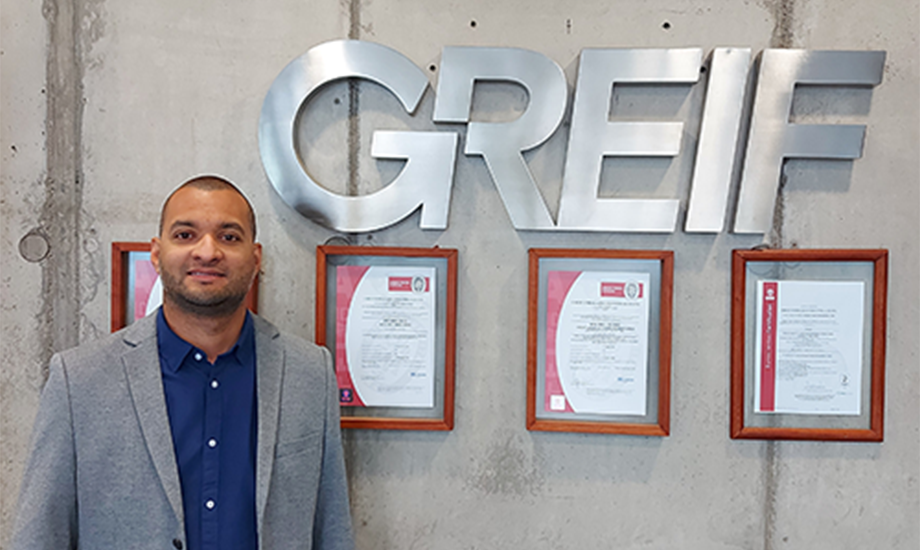
Créditos de Redução de Emissões (ERCs)
Em uma tentativa de reduzir as emissões de poluentes atmosféricos da Greif, como Óxidos de Nitrogênio (NOx) Compostos Orgânicos Voláteis (VOCs), as fábricas de papelão da Greif em Los Angeles, Califórnia e Fitchburg, Massachusetts substituíram o equipamento por uma tecnologia mais eficiente em termos de energia que reduz os poluentes atmosféricos. As operações em Massachusetts, sozinhas, economizaram 96 toneladas de NOx e 27 toneladas de VOCs em um único ano. As atualizações também permitiram que a Greif aproveitasse os programas de Cap-and-Trade na Califórnia e Massachusetts que fornecem ERCs para atividades semelhantes. Em 2019, a Greif recebeu $1.037.100 em ERCs por meio desses programas.
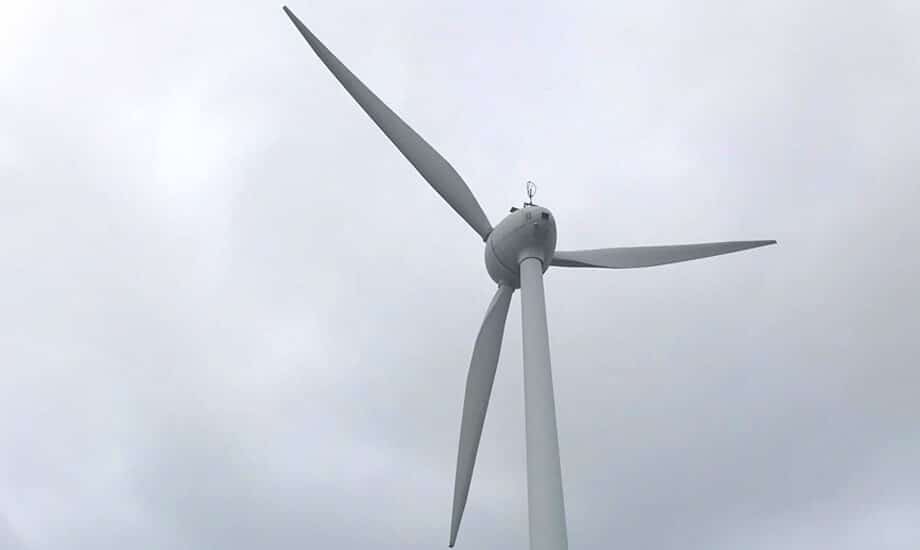
Transição para empilhadeiras elétricas
Como parte de nossa meta abrangente de ter equipamentos mais eficientes e sustentáveis, em 2018 começamos a transição de nossa frota de empilhadeiras de ser movida a gasolina de combustão para eletricidade, o que reduz nossas emissões de empilhadeiras em aproximadamente 50%. Até 2021, convertemos 85% de nossas empilhadeiras na EMEA para energia elétrica e obtivemos uma economia de custos de $365.000. Devido ao sucesso do programa e em apoio à nossa Política geral de empilhadeiras renováveis, o programa será implementado globalmente. Além dos benefícios ambientais, a transição proporciona um ambiente de trabalho mais seguro para nossos colegas, reduzindo a necessidade de manter contêineres de gasolina em nossas instalações.
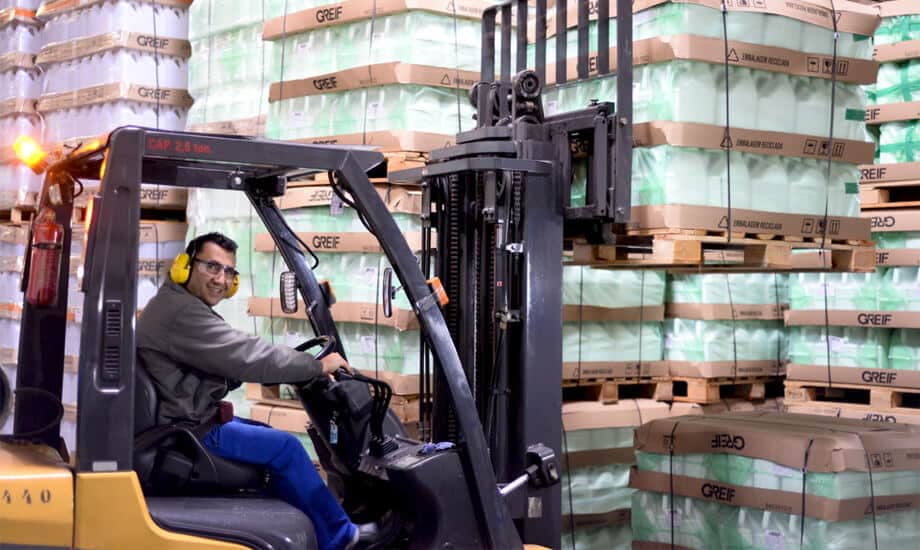
Eficiência Energética na Produção
A Greif fez recentemente um investimento em larga escala em uma nova máquina de moldagem por sopro usada para fabricar os galões plásticos da Greif em nossa fábrica de Casablanca, Marrocos. A nova máquina usa até 30% menos energia do que máquinas de geração mais antiga, ao mesmo tempo em que oferece níveis de produtividade significativamente maiores. O novo equipamento aumenta a capacidade de produção em até 25% para nossas garrafas de um a cinco litros e foi projetado para otimizar e reduzir o uso de matéria-prima, estendendo o benefício ambiental da máquina além do uso de energia.
A equipe no Marrocos também implementou outros projetos de eficiência energética, como a eliminação de vazamentos de ar em nossas plantas de plástico e aço, a substituição de extrusoras hidráulicas por elétricas em quatro máquinas, a atualização de equipamentos antigos e a substituição de motores CC por motores CA em várias máquinas de moldagem por sopro, o que ajuda a reduzir significativamente nosso consumo de energia.
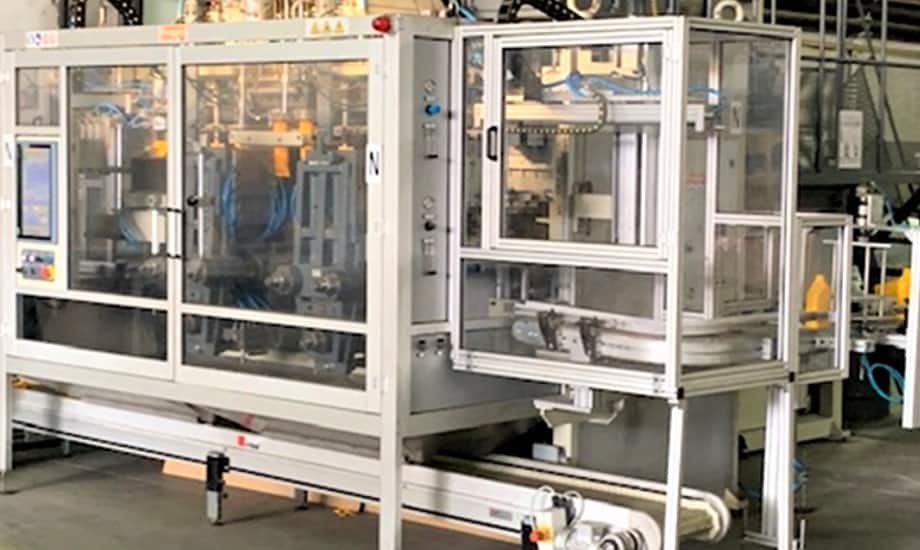
Promovendo a energia renovável
As energias renováveis, como biomassa, energia solar e eólica, desempenharão um papel importante no enfrentamento dos desafios das mudanças climáticas a longo prazo. Estamos comprometidos em testar e expandir o uso de tecnologias de energia renovável em nossas operações globais quando isso for economicamente viável e no melhor interesse de nossos stakeholders. Em nossas operações globais, instalamos mais de 6.900 painéis solares capazes de 1,87 milhões de quilowatts-hora (kWh) de produção solar. Devido ao nosso investimento contínuo, as energias renováveis agora respondem por 12% do uso de energia da Greif.
Na América do Norte, instalamos mais de 2.000 painéis solares em sete instalações, fornecendo 760.000 kWh de energia e economizando mais de $112.000 anualmente.
Em 2016, três das nossas maiores usinas brasileiras começaram a obter sua energia parcialmente por meio de recursos renováveis. Em 2017, expandimos o programa para três usinas adicionais no Brasil, reduzindo as emissões em 70% e economizando $1,4 milhões de USD anualmente.
Em abril de 2017, a unidade Shanghai RIPS da Greif concluiu a instalação de painéis solares, convertendo 15,4% da eletricidade da unidade para uma fonte renovável e economizando mais de $16.000 USD anualmente. Em todas as nossas operações na China, obtemos energia renovável por meio de 4.800 painéis solares por meio de contratos de compra de energia.
Nossas operações FPS na Turquia produzem mais de dois milhões de kWh de energia por meio de turbinas eólicas e moinhos de vento.
Em 2020 e 2021, instalamos painéis solares no telhado de nossa instalação em Israel. Esses painéis proporcionam economia de emissões de 748 toneladas de CO2 anualmente, convertendo 12% do consumo anual de energia da instalação em energia solar limpa e apoiando a redução dos custos de aquecimento e resfriamento.
Em 2021, os painéis solares em nossas duas instalações em Ede, Holanda, produziram mais de 1 milhão de kWh de eletricidade.
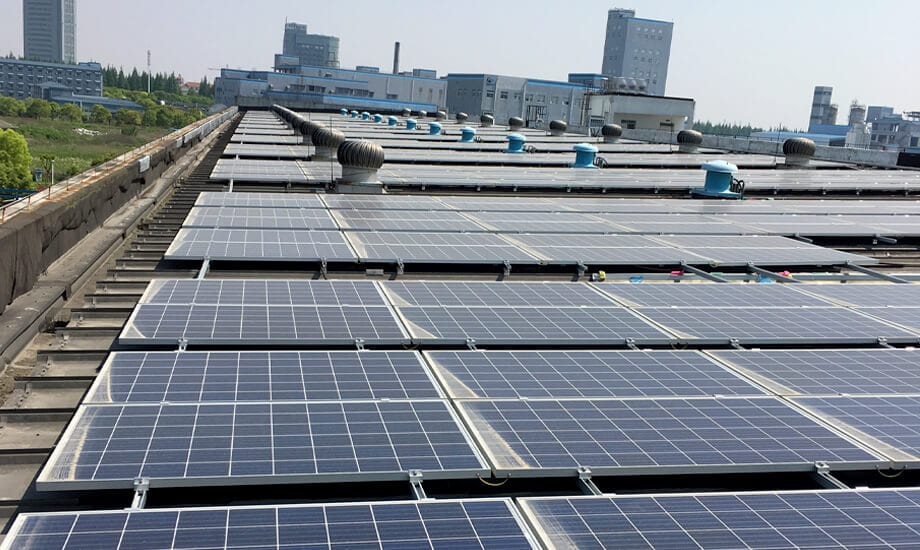
Parceria de transporte SmartWay da EPA
Para gerenciar a logística de forma ambientalmente responsável, a Greif utiliza transportadoras aprovadas pela EPA Maneira inteligente iniciativa sempre que possível. Incluímos a certificação SmartWay durante nosso novo processo de certificação de operadora. A base de operadoras aprovadas pela SmartWay da Greif é responsável por 77 por cento do total de milhas percorridas.
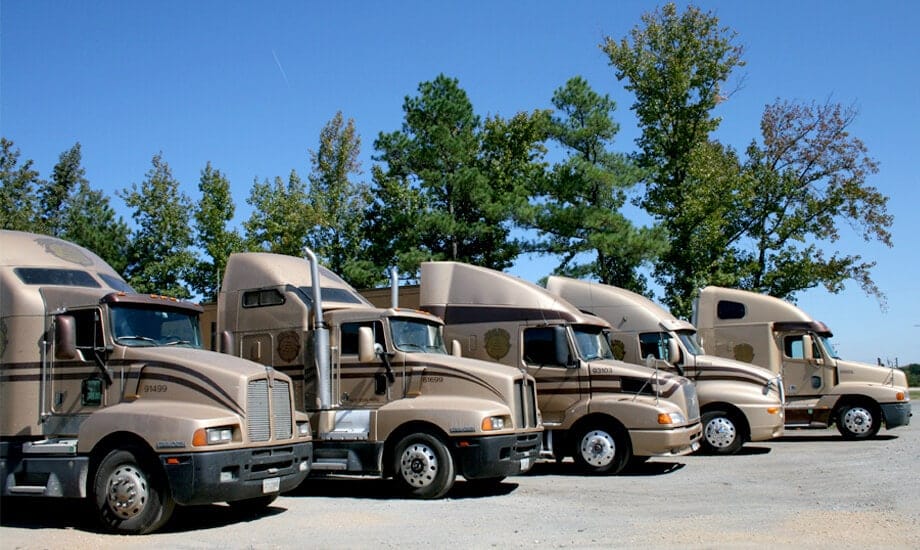
DESTAQUES DE SUSTENTABILIDADE
12%
Energia proveniente de fontes renováveis
Continuamos investindo em projetos de energia renovável com boa relação custo-benefício que reduzem nossa pegada de gases de efeito estufa.
B
Pontuação CDP de Greif em 2021
Demonstrando excelência em gestão de carbono, governança, estratégia e melhores práticas, e superando a pontuação média geral e norte-americana do CDP de C.




